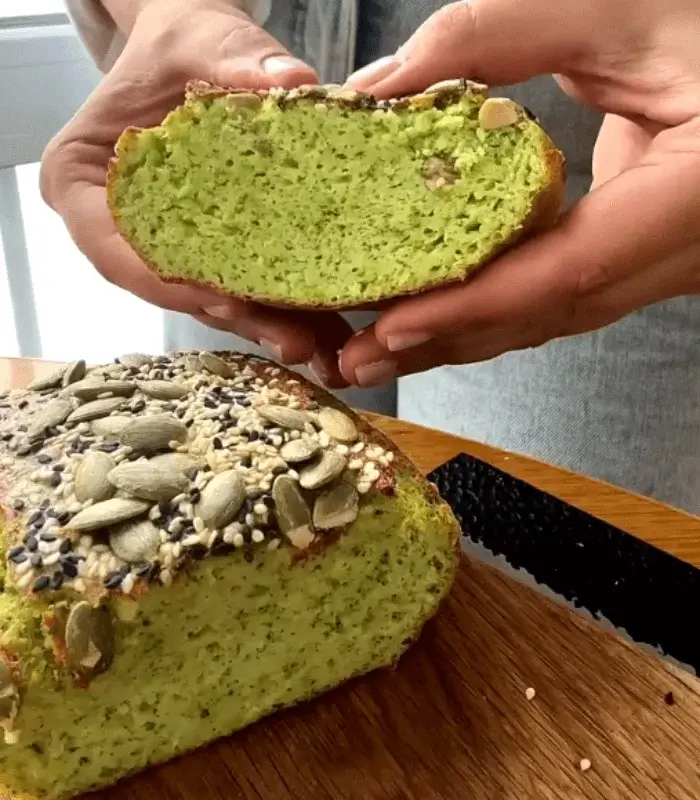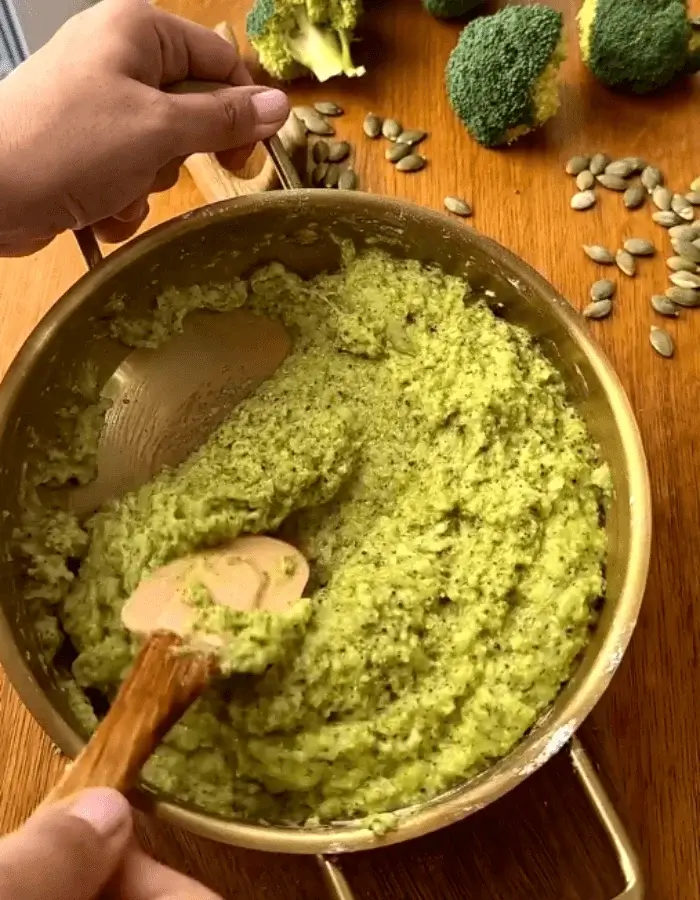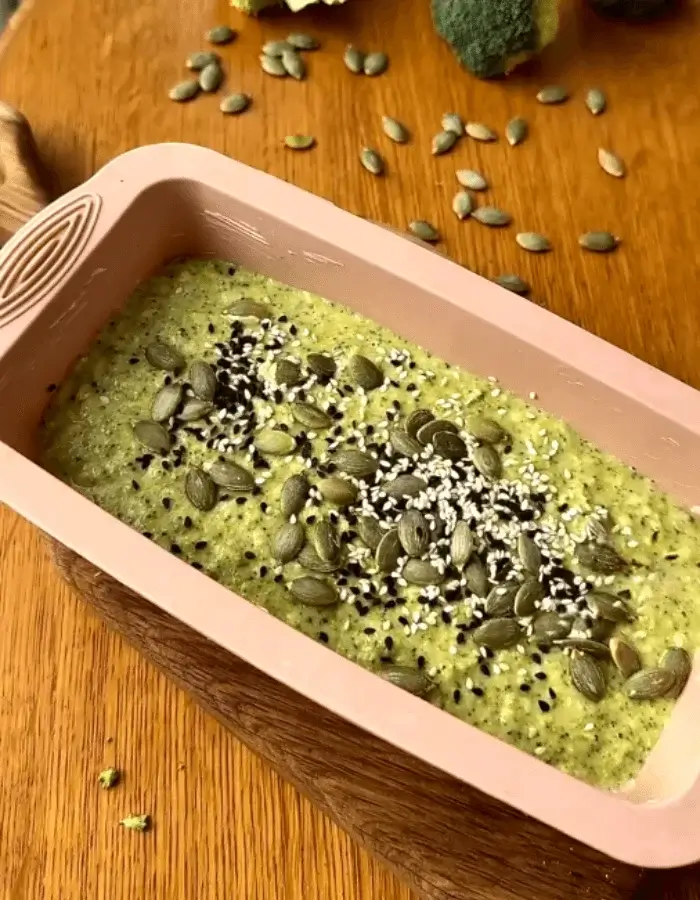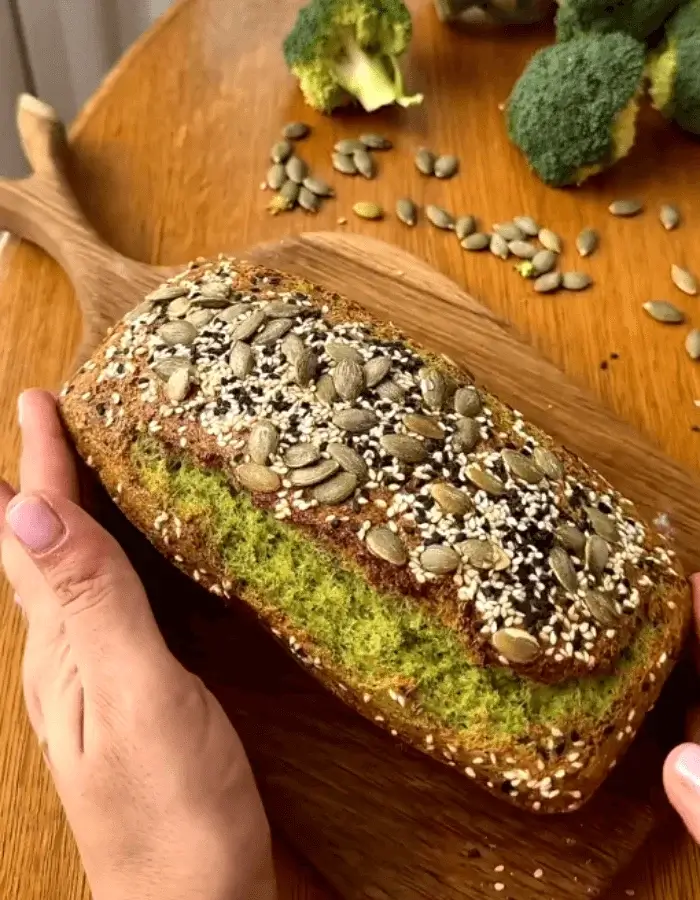Simple Broccoli Bread
We may earn a commission from recommended products, at no extra cost to you. See Disclosure.
- Food processor
- Loaf pan (9×5 inches/23×13 cm)
INGREDIENTS
- 1 medium head broccoli, about 3 cups florets
- 3 large eggs
- 1¼ cups/150 grams all-purpose flour
- 2 teaspoons/8 grams baking powder
- ½ teaspoon salt, or to taste
- 2 tablespoons sunflower seeds
- 1 tablespoon sesame seeds
INSTRUCTIONS
- Preheat the oven to 390°F (200°C). Grease or line a loaf pan (about 9×5 inches/23×13 cm) with parchment paper.
- Cut the broccoli into florets and blend in a food processor until finely ground but not pureed. Transfer to a large mixing bowl.
- Add the eggs, flour, baking powder, and salt. Stir until the mixture is smooth and evenly combined.
- Pour the batter into the prepared pan and smooth the top with a spatula. Sprinkle with sunflower and sesame seeds.
- Bake for 35 minutes, or until golden brown and a toothpick inserted in the center comes out clean. Allow the bread to cool in the pan for 10 minutes, then remove and cool completely on a wire rack before slicing.
- Serve with sour cream or a slice of cheese for a light meal or snack.
MY NOTES

FAQ
Can I use frozen broccoli?
Yes, frozen broccoli can be used in this broccoli bread recipe, but it requires proper handling to avoid excess moisture. First, thaw the broccoli completely and then squeeze it in a clean kitchen towel or cheesecloth to remove as much water as possible. Excess moisture can make the batter too wet, which may result in a dense or underbaked texture. Once drained, pulse the broccoli in a food processor as you would with fresh. The flavor will still be excellent, and the nutritional value is comparable. Just make sure your final batter isn’t too loose before baking the broccoli bread.

How do I store leftover broccoli bread?
This bread should be cooled completely before storing. Wrap it tightly in plastic wrap or place it in an airtight container and refrigerate. It will keep for up to 4 days in the refrigerator. For longer storage, broccoli bread can be frozen. Slice it first for convenience, then wrap the slices individually and freeze for up to 2 months. To reheat, simply toast or warm in a 350°F (175°C) oven until heated through. This helps preserve the bread’s texture and prevents sogginess, especially if it’s been refrigerated or frozen.
Can I make this broccoli bread gluten-free?
Replace the all-purpose flour with a 1:1 gluten-free flour blend that contains xanthan gum for structure. If the mix lacks xanthan gum or a binder, add about ¼ teaspoon per cup of flour to help mimic the elasticity of gluten. Almond flour or oat flour can also be used for a more wholesome option, though you may need to adjust the egg quantity or add a tablespoon of ground flaxseed to help the batter hold together. Always check that baking powder used is certified gluten-free as well.

What can I serve with broccoli bread to make it a full meal?
Broccoli bread pairs well with a variety of toppings and sides to create a complete meal. For a protein-rich option, serve it with scrambled or poached eggs and a spoonful of sour cream or cottage cheese. You can also top slices with hummus, avocado, or smoked salmon for a satisfying open-faced sandwich. For a vegetarian meal, pair it with a warm lentil salad or roasted vegetables. Broccoli bread also works as a side to soups, especially creamy ones like tomato or mushroom, adding both texture and nutrition to your plate.
Why is my broccoli bread too dense or gummy?
If your broccoli bread turns out dense or gummy, there are a few possible reasons. First, make sure the broccoli is finely chopped but not puréed, and that any excess moisture has been thoroughly drained—especially if using frozen broccoli. Too much water in the batter can prevent proper baking. Also, be careful not to overmix the batter, which can make the bread tough. Check your baking powder’s freshness; old leavening agents can lead to a flat result. Finally, ensure the bread is baked through—an underbaked center can feel gummy. Use a toothpick to test for doneness before removing from the oven.

